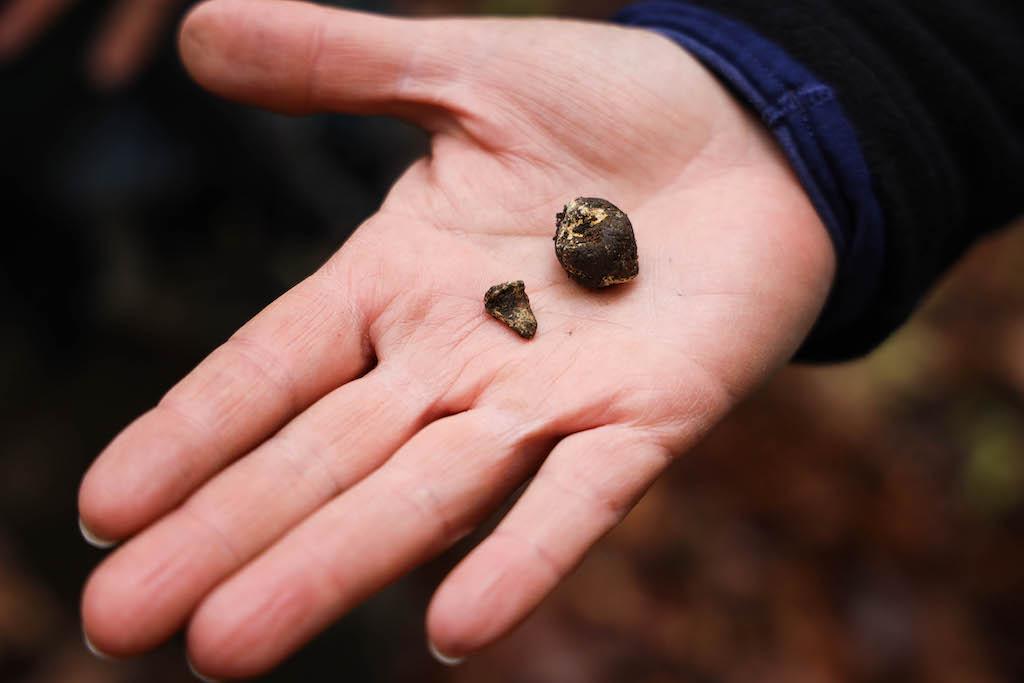
Jumonville Glen, Fort Necessity National Battlefield/NPS file
It was a short skirmish, perhaps just 15 minutes, but it left 13 French soldiers dead, precipitated the French and Indian War, and perhaps was instigated by a young, brash George Washington.
Washington was just 22 when, as a lieutenant colonel in His Majesty's Army, he and 40 fellow British soliders and a handful of Iroquois traveled through the rainy night of May 27, 1754, along a ridge in the Allegheny Mountains towards a French encampment that had been spotted by Tanaghrisson, an Iroquois warrier and British ally.
As morning dawned, Washington and his troops stood on a rocky ridge overlooking a glen where the French were camped. Washington would later report that the French went for their muskets and that ignited the skirmish. Among the dead was Ensign Joseph Coulon de Villiers de Jumonville, the commander of the Frenchmen and whose name has ever since been attached to the site.
Two-hundred-and-sixty-nine years later, a handful of bullets, perhaps one fired by Washington, pinpointed where the battle took place in today's Fort Necessity National Battlefield in western Pennsylvania.
"I've been involved with the site for a long time and I've always questioned whether we actually had the site," said Brian Reedy, Fort Necessity's chief of interpretation. "It's kind of the old joke, how you know there was a battle here, because a historian told me so. There really was no conclusive archaeology ever done on the site."
That changed during a four-week period from late April into May when archaeologists armed with metal detectors went into the area known as Jumonville Glen. A small rockface, running several hundred yards atop Chesnut Ridge and perhaps the one Washington stood on overlooking the French, is the prominent feature.

One of the 18th century bullets, with a fragment, recently discovered at Fort Necessity National Battlefield/NPS
"The area, it has changed, but it's slowly coming back to what it looked like," Reedy said during a phone call last week. "It's one of the few places that we have in our park where you can truly immerse yourself and get a sense of the isolation as you're standing amongst the mature oak trees that have now been allowed to grow back. The area was logged out a little over 100 years ago. So we have no witness trees to the time to the battle. But the Mother Nature does what it does best when it's left alone, and the forest has come back. So it looks like it's virgin timber, or mature forest."
Washington's orders were to relay to the French that they were on land claimed by the British and should leave. The French, however, viewed the Ohio River Valley as their own.
Exact details of the short battle between the two sides early on May 28, 1754, have largely been lost through time, though Washington came away exhiliarated from the fight.
"I fortunately escaped without any wound, for the right wing, where I stood, was exposed to and received all the enemy's fire, and it was the part where the man was killed, and the rest wounded," he wrote to his brother. "I heard the bullets whistle, and, believe me, there is something charming in the sound."
Reedy said there were reports that the overnight rain had compromised the French muskets and so they were no match for the Native Americans who aided Washington.
"I don't think there was a whole lot of firing going on. The one account says that most of the French met their destiny at the hands of the Indians' tomahawks and knives. So there were 13 French killed there, one British soldier is killed, and the most recent accounts says that he was actually killed by friendly fire," the ranger said. "The account says that he had stepped too far forward of his comrades, and was killed by musket fire. It's a very short affair. If there were maybe 100 rounds fired, that would probably be about the extent of it."

Archaeologists spent four weeks surveying an area of Jumonville Glen for evidence of the skirmish that precipitated the French and Indian War/NPS
About a half-dozen of those rounds were found during the recent archaeological survey, which was launched in a bid to lift the mystery of exactly where the skirmish occurred.
"There's a rockface that kind of goes for several 100 yards down this valley, and the Park Service portion of it is just this small section where it's like, 'OK, this is where it happened,'" expalined Reedy. "But there are other possibilities going further down this valley, as you follow the stream. It leads to the adjacent property. So that's what kind of was guiding this, for at least 30 years."
The site where the battle raged occupies less than an acre, according to the ranger. But it was big enough to lift the mystery.
"The primary military arm was a smoothbore musket. And the caliber of the bullets that we did find there are consistent with those that were found archaeologically in Fort Necessity when that site was excavated in 1950," he said. "So they range in that 60 caliber range, which is right there for typical for military muskets.
"... All the balls that were found, they weren't dropped. They weren't in a perfect sphere. They all had evidence of being fired," Reedy said. "And that one [in the photo above], that particular one was actually found with a small piece of lead next to it that might have broken off when it impacted the ground, because it is a very rocky area down there in the glen."
According to a 2019 Smithonian Magazine article, it's very possible that Washington fired the very first shot in the affair.
For now the bullets are being studied and catalogued. When that's finished, they'll be returned to Fort Necessity and put on display.



Add comment